I've always wondered what would be the best way (and I mean a standard, OMG approved way) to model a String collection in UML.
Let's say I have a simple design where there are quotes, each one of them represented by several keywords. So I model a "Quote" class, with the quote itself (a String), the name of its author (another String) and a collection of keywords (being each one of them Strings as well). If I want to show the String multiplicity in my "keywords" attribute, I'd have to add in my design the "String" class. But since this is a built-in class in most languages, I'd just leave it empty because I don't know how it is actually implemented.
So I'd have something like this: 
It looks a bit awkward to me... Is there a better (standard UML) way to model this?